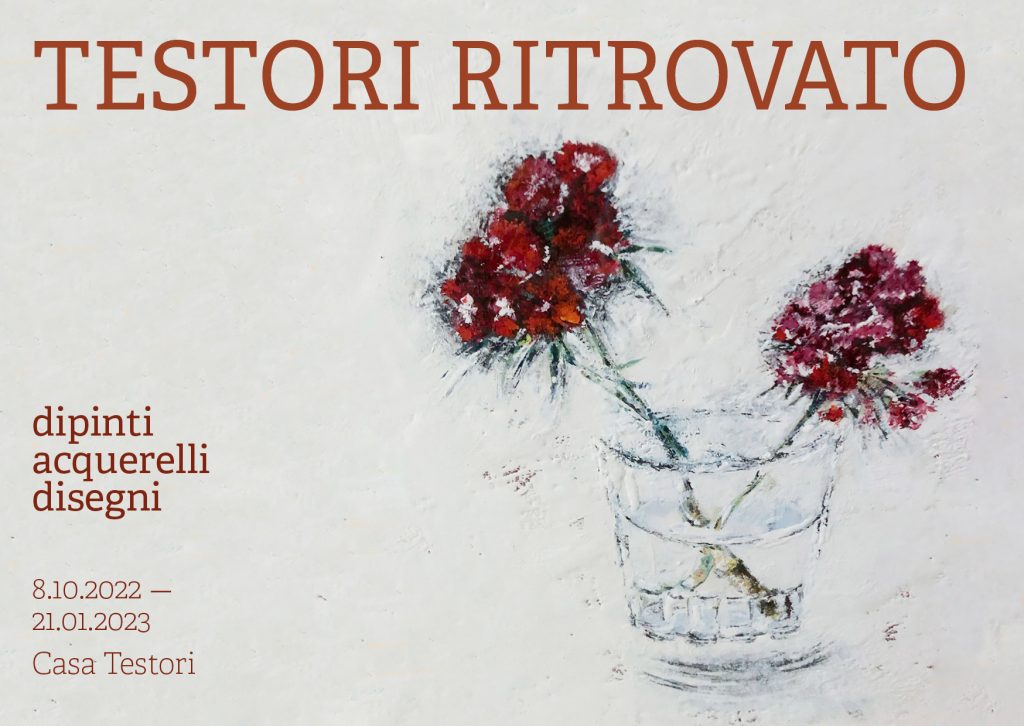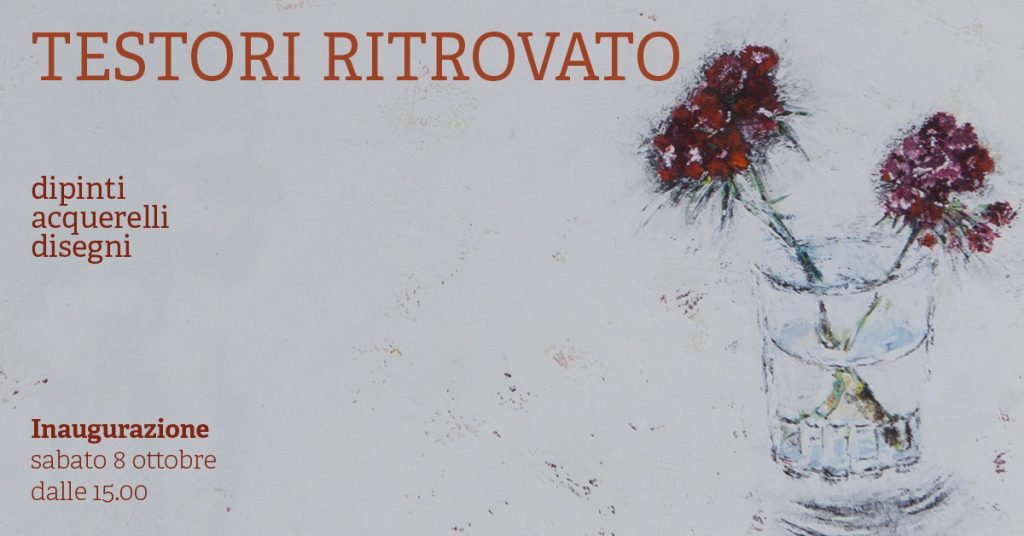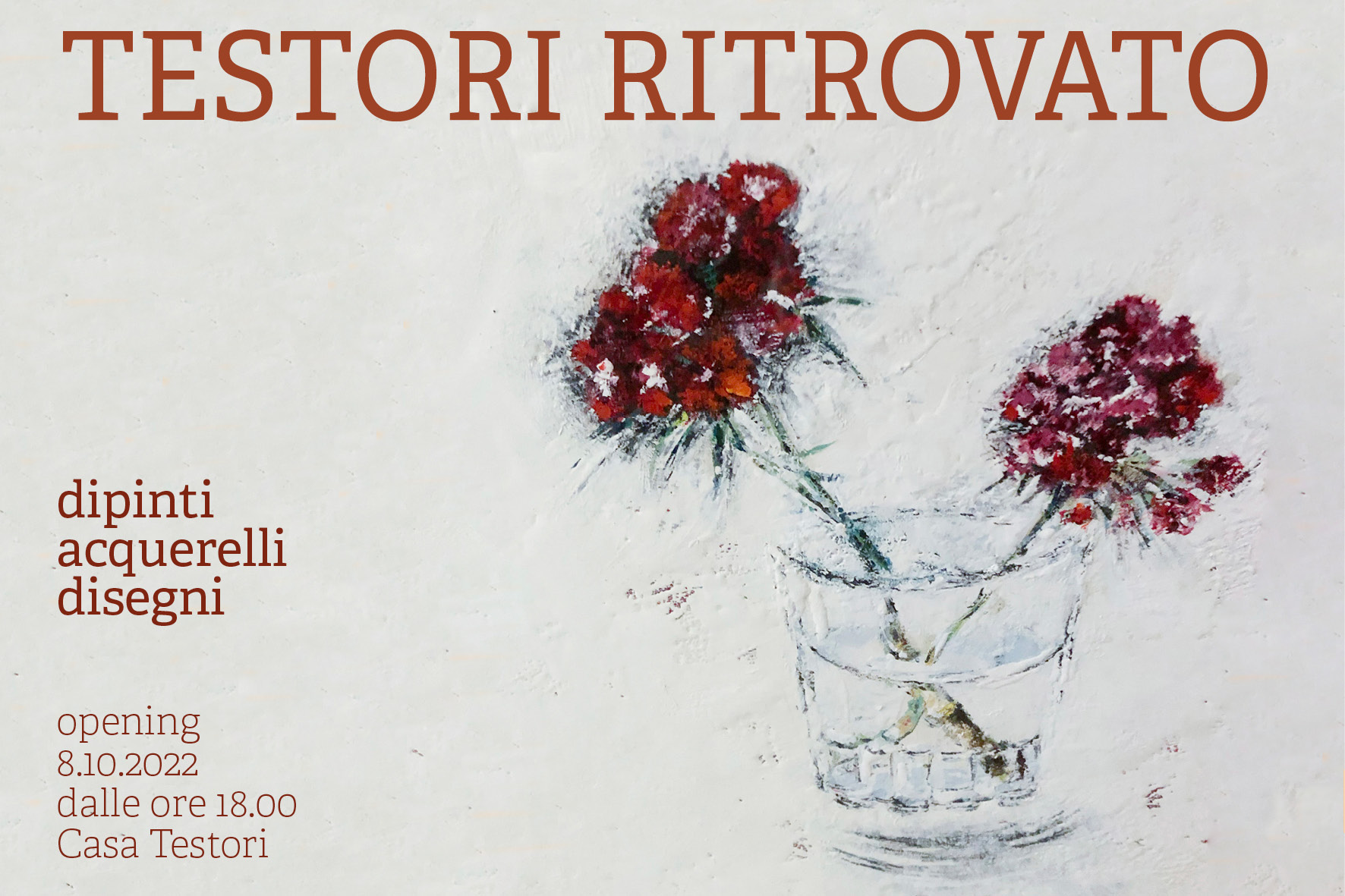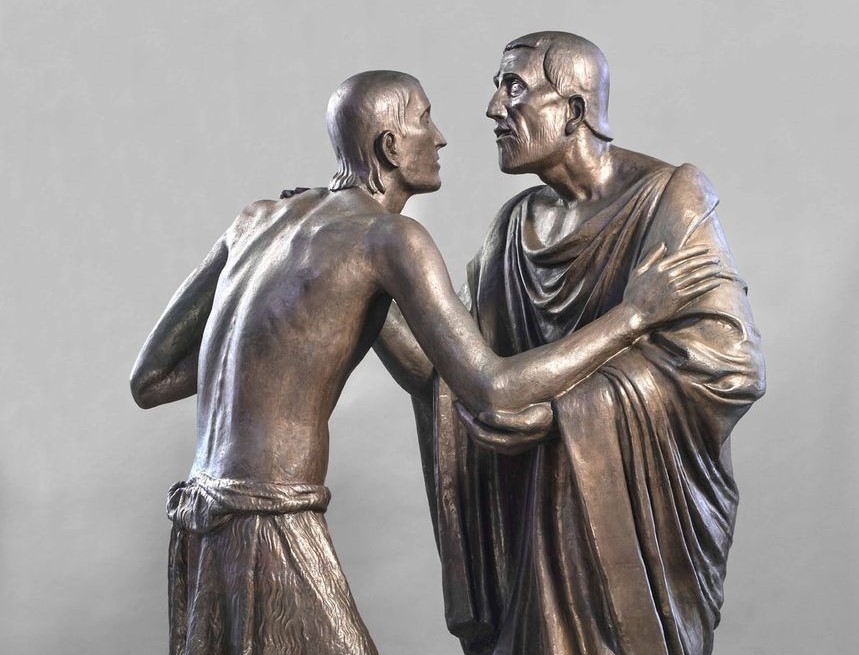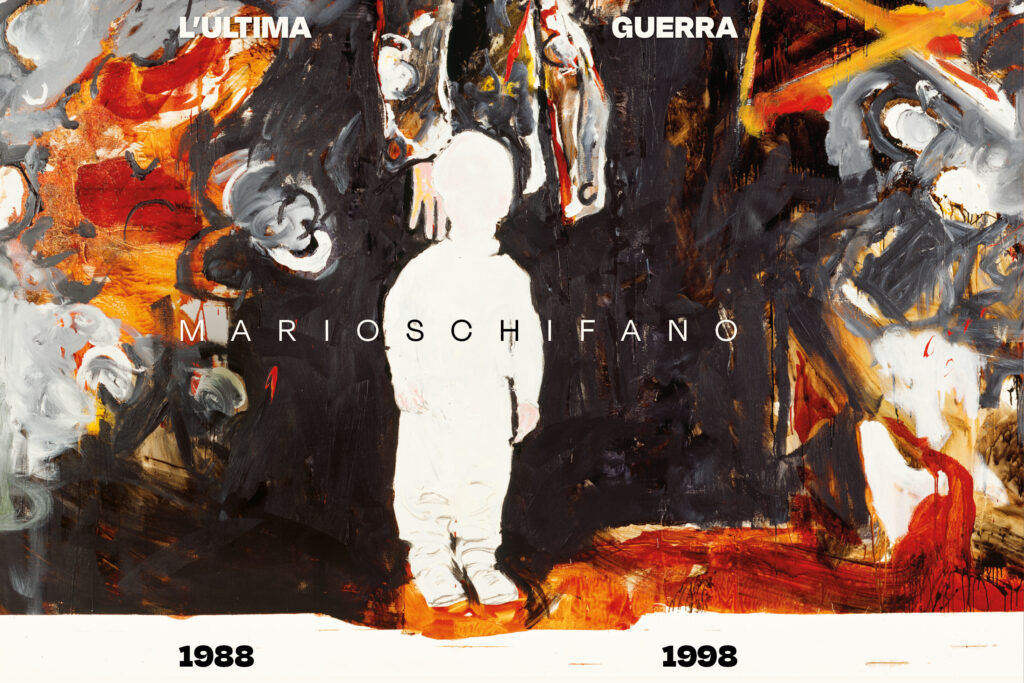A project by Casa Testori
Casa Testori
October 8 – January 28, 2023
The exhibition with which Casa Testori leads us to Giovanni Testori’s birth centenary (1923-1993) is dedicated to his activity as a painter. After all, Testori was known as one of the most lively and controversial intellectuals, writers, playwrights and art critics of the twentieth century. He began his tireless cultural production in the 1940s precisely as a painter and his first critical writings were born from direct experimentation.
The exhibition was animated, for its entire duration, by guided tours conducted by students from some of Milan’s high schools as part of the first of four projects called “GI00VANNI TESTORI WITH THE SCHOOLS: PCTO for the Testorian Centenary”.
The exhibition and the educational activities related to it are realized with the support of the Lombardy Region.
An extraordinary acquisition
The occasion that led to the exhibition was the recovery by the Giovanni Testori Association of an important group of paintings and drawings that reemerged after twenty years of oblivion, works that allowed the visitor to discover an unpublished Testori. The pictorial production is bounded to two specific moments in Testori’s life, separated by a long pause away from the canvases.
If the first group is connected to the years around the Second World War, between 1942 and 1949, the second one, which began at the end of the 1960s, runs through the entire 1970s in a dense succession of experiments, some of which are also technical.
On the first floor
Following a chronological thread, the works have been arranged along the walls of the two floors of the house. On the first floor, two rooms have been dedicated to the 1940s: from the first watercolor landscapes to the studies for la Crocifissione of 1949, a surprising succession of paintings, with which Testori participates in the formal research of a generation that has to deal with Picasso. The room dedicated to the sunsets on the lake and Le teste del Battista marks Testori’s return to representation: from drawing to watercolor until the first oils between 1967 and 1969, this is how the revolution of the incoming decade is being prepared. The entire lower floor is dedicated to this.
On the ground floor
The Seventies explode from the first room, with their incredible load of material: blocks of oil paint that, from Trittico dei pugili, accompany us into the living room and on the porch. This production is entirely concentrated between 1970 and 1971 and it came down from the easel just in time to be exhibited at the great exhibition directed by Mario Tazzoli at the Galleria Galatea in Turin.
In the kitchen there was space for a necessary in-depth study of drawing and the carnality of the sign; these works were executed between 1970 and 1974 and are watched over by his self-portrait. To give an account for new important changes in technique, we encounter the large acrylics, mostly female nudes that can only be reached by overcoming the great struggle of the boxers, placed at the bottom of the stairs. The exhibition concludes with the unusual peace of the still lives from 1977. Still white: the background is spread in watercolor, but the brush stroke is thick and full-bodied to hide the crackling of the color that still beats beneath the surface. Splendor and restlessness, as always happens in the work of Giovanni Testori.
Realismo Quaranta
The Testori Association preserves the most important group of works created by Testori in his first pictorial season. A true visual palimpsest of his critical thought, in years in which Italian Realism is at the center of the cultural debate and the painters who feel they belong to it question themselves on the suffering of the War, on the thirst for Freedom, on the strength of everyday life and on the specter of Picasso, a master father that they try to overcome without succumbing. These are years in which Testori entrusted his drawings to the GUF magazines for which he was already responsible for the art section at 18 years old.
As a painter, he learns the ropes on landscapes and still lives in the bombarded and then liberated Milan and he questions himself on the return of avant-garde painting in churches, arriving at the realization of the great Crocifissione, the masterpiece of those years displayed in the exhibition and the last work created before the twenty years abandonment of painting.
Tutto Settanta
In the same decade as the great stagings of Ambleto, Macbetto, Edipus (1972-1976) at the Teatro Pier Lombardo with Franco Parenti, Testori threw himself headlong into painting: the material oil paintings were exhibited at Mario Tazzoli’s Galatea gallery in Turin (1971), then he moved onto acrylic with the nudes of women presented at the Galerie Alexander Iolas in Milan (1974) and after that he branded charcoal drawing with fury for the great anatomical and plant studies that disturbed the public of the Milanese Galleria del Naviglio by Giorgio Cardazzo (1975) and the Roman Galleria il Gabbiano (1976). A ride through the material and the depth of carnal subjects that was gradually presented in the catalog by art critics such as Luigi Carluccio and Giuliano Briganti, but also literary critics such as Piero Citati and Cesare Garboli, to underline the intertwining of literature and figuration that was so decisive for Testori.
Bianco Testori
In the exhibition, the visitor has been called to a total immersion in painting, passing from vision to vision, discovering thematic assonances through investigations that exhaust a subject or a technique in a few months. Both for Testori the painter and the critic, and even the poet, the matter is the heart of his expressive research, which in this exhibition emerges thanks to new protagonists. In this way, we discover the central role of white in the experimentation of the Seventies. It is a color that, after being initially denied by the application of large colored backgrounds, when the subject is completed, it often intervenes to cancel them. This is what happens in his famous Pugilatori, immersed in a material-life made with blocks of color, from which the figure must emerge by force in order not to sink. It is the same white that, having lost its depth, becomes light fog in the almost monochrome acrylics of the Nudi Femminili ton sur ton, ready to be later tinged with blood red during the bloody mutilating interventions that characterize the cycle presented by Iolas, for which Testori took care of the layout in detail, right down to the design of the frames. A white that seems negated by the deep black of graphite, spread with impetuosity in the large papers of the mid-seventies. Those are carnal male and female anatomical studies that are associated with plant elements, if possible even more carnal. Papers that appear to be huge photographic negatives with erotic subjects, which accentuate, more than the morbidity of vision, the inexhaustible struggle for survival. It’s no coincidence that some of these works were placed at the end of the exhibition at Palazzo Reale in Milan dedicated by Francesco Bonami to the Seventies (2012) and they are now at the center of an exhibition dedicated to the heretics of the twentieth century, set up in recent months at the Mart of Rovereto.
The white, hidden by the “negative” of these papers, immediately re-emerges as the protagonist in 1977, called upon to delete once again the colored backgrounds often spread in bright yellow, as it had happened at the beginning of the decade. A white that returns clumped to watercolor in large backgrounds similar to imposing theatrical wings that allow to see a glimpse of the barely perceptible color under them and from which domestic vegetables and flowers re-emerge. Flowers that were described as archaeological finds cleaned from the earth, or plucked animals, as if they were lying on the marble table abundantly floured by a cook. A freshness and restlessness, as much ancestral as it is domestic, which makes these Nature Morte perhaps the most surprising works of Novate’s exhibition.
At the end of the initiative, a conference dedicated to Testori’s painting of the 70s took place.
For the occasion, Antonio Grulli, independent curator and permanent member of the board of Viafarini space in Milan, Lorenzo Madaro, professor at the Brera Academy, curator and critic for La Repubblica and Rischa Paterlini, curator and professor at Naba, have been invited to speak. You can watch the conference here.

